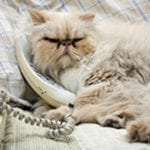 Misconceptions
Misconceptions  Misconceptions
Misconceptions  History
History 10 Amazing Roman Epitaphs
 Weird Stuff
Weird Stuff 10 Niche Subcultures That Are More Popular Than You Might Think
 Mysteries
Mysteries 10 Tragic Disappearances and Deaths in Joshua Tree National Park
 History
History 10 Ways Childhood Really Sucked in the Old West
 Music
Music 10 Name Origins of Famous Bands from the 1990s
 Religion
Religion 10 Biggest Turnarounds by the Catholic Church
 Weird Stuff
Weird Stuff 10 Unbelievable Times Laws Had Unintended Consequences
 Humans
Humans Ten Historic Women Who Deserve Way More Credit Than They Got
 Movies and TV
Movies and TV 10 Films That Spawned Major Lawsuits
 Misconceptions
Misconceptions 10 Phony Myths and Urban Legends That Just Won’t Die
 History
History 10 Amazing Roman Epitaphs
 Weird Stuff
Weird Stuff 10 Niche Subcultures That Are More Popular Than You Might Think
Who's Behind Listverse?

Jamie Frater
Head Editor
Jamie founded Listverse due to an insatiable desire to share fascinating, obscure, and bizarre facts. He has been a guest speaker on numerous national radio and television stations and is a five time published author.
More About Us Mysteries
Mysteries 10 Tragic Disappearances and Deaths in Joshua Tree National Park
 History
History 10 Ways Childhood Really Sucked in the Old West
 Music
Music 10 Name Origins of Famous Bands from the 1990s
 Religion
Religion 10 Biggest Turnarounds by the Catholic Church
 Weird Stuff
Weird Stuff 10 Unbelievable Times Laws Had Unintended Consequences
 Humans
Humans Ten Historic Women Who Deserve Way More Credit Than They Got
 Movies and TV
Movies and TV 10 Films That Spawned Major Lawsuits
10 Psychological Reasons Internet Cats Are So Popular
If you’ve spent any amount of time on the Internet, you may have noticed that cats seem to be everywhere. Webcomics, gifs, Vines, YouTube videos, pictures, memes—it’s hard not to be impressed by the sheer ubiquity of cats on the web. A recent study from Indiana University found that cat videos on YouTube averaged more views per video than any other genre.
From famous cat videos like Ninja Cat and Two Talking Cats, to cat celebrities like Lil Bub, Maru, and Grumpy Cat, it’s clear that cats do seem to be taking over the online world. But why cats? What makes our furry feline friends so appealing that they’re saturating the Internet with their adorable antics?
10Cats Never Evolved To Work With Humans
Let’s start with a contrast. Dogs have been domesticated for tens of thousands of years. Over that time, we’ve deliberately bred them to suit our needs, to the point that there’s almost no resemblance between, say, a chihuahua and its wolf ancestors. As a result, dogs are perfectly equipped to deal with humans. Cats, on the other hand, basically domesticated themselves. Because they were cute and good at killing pests, our ancestors let them stick around, but our domesticated kitties aren’t noticeably dissimilar from wild cats. In fact, University of Bristol biologist John Bradshaw estimates that 85 percent of all cat mating still involves wild or feral cats, counteracting any evolutionary push toward domestication.
In other words, cats never really evolved to cohabit with humans in the way that dogs did. That’s why cats can be so much harder to read than dogs, and why they’re often perceived as more independent and aloof. And cats find it just as hard to understand us. Think how many popular cat videos involve cats breaking stuff, ignoring commands, or just generally appearing confused by humanity. They aren’t jerks, they just never evolved to work with us.
9The Odd Couple Factor
One of the most popular genres of cute animal Internet videos involves “odd couple” animal friendships, often with animals who normally might have a predator-prey relationship. For example, a dog whose best friend is a cheetah, or a tiger and piglets, or a cat being harassed by a parrot. It’s sweet because . . . come on! That cat shouldn’t hanging out with that parrot! That cat should be eating the parrot! But look, they like each other. It’s adorable.
Humans and cats have a similar “odd couple” vibe. Sure, the human-cat relationship might have started as a marriage of convenience, but in the developed world we’re no longer reliant on felines for pest control. In fact, there’s no practical reason for us to let small furry animals live with us and eat our food, especially when they’re not even as friendly and playful as dogs. In the wild, we used to prey on them, while their big cat cousins are happy to prey on us. But we still keep cats around because, well, we just like them. And since cats chose to hang around us rather than being deliberately domesticated, it seems like they don’t mind us either. It’s adorable.
8Our Cats Think We’re Cats
Cats meowing is a ridiculously popular genre of Internet video. But cats only do that because they don’t really know how to deal with us. Since cats never evolved a mental framework for coexisting with humans, they basically have to rely on their own social behaviors to interact with people. In other words, cats basically default to viewing us as a “big, dumb non-hostile cat.” Specifically, they seem to treat us similarly to how kittens treat their mothers. Obviously, cats know we aren’t their mothers, but that’s the best framework they have to process the giants who give them food and occasionally try to pet them.
As a result, cats often try to communicate with us the same way they would communicate with other cats—through body language. But since we don’t speak Cat, the whole relationship is a series of wacky Darmok-and-Jalad-style misunderstandings.
Meowing is a prime example of this. Cats hardly ever meow at each other—usually when they’re angry, afraid, or in heat. They only meow at us so often because we’re constantly talking to them. They recognize we’re trying to communicate with them and they meow at us in an attempt to reciprocate. As Professor John Bradshaw told New York Magazine, meowing is thought of “as an absolutely classic cat behavior, but it’s something they’ve learned to do to get our attention. It’s really something they’ve adopted as a way of communicating with humans.”
7And We Think Of Them Like Humans
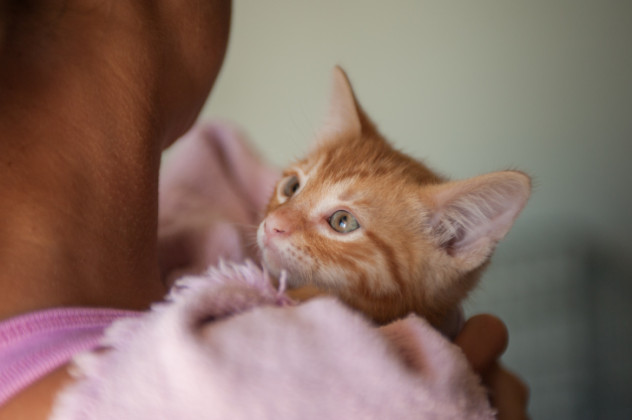
But don’t start feeling too smug. If cats tend to think of us as bigger cats, we have a tendency to think of them as smaller, cuter humans. Attributing human motivations to our pets is part of the reason we find them so compelling to own or watch online. The problem is, a lot of the time we’re wrong.
Take one of the most common funny-cat behaviors: the dead animal gift. You know, the dead mouse, bird, vole, cockroach, or gigantic rat that your cat is kind enough to deposit on your doorstep, next to your bed, or on your pillow. The common explanation for this is that your cat regards you as its kitten and is trying to teach you how to hunt properly. It’s cute, sweet, and all about us. However, biologists now think the behavior probably doesn’t have anything to do with humans after all.
Cats hunt by sniffing out the scent marks of small animals and then waiting downwind for their prey to show up. The problem is that multiple cats are often drawn to the same scent marks, which can lead to fights over food. So cats evolved to take their catches back to a safe location before tucking in. To complicate matters, cats have a hunting instinct largely separate from hunger—a cat will try to kill a mouse even when it has no desire to eat it. So our pet cats follow their instincts by killing animals and carrying them back to the house. Then, they remember that cat food tastes much nicer than some random lizard and just dump their catch for us to clear up.
6Our Cats Think We’re Really Dumb

Since cats treat us like cats and depend on us for things like food, water, and opening the door to let them out (and then in again, even though we just let them out), they do recognize, even as solitary animals, that we are in some way in charge—the “big cat” in the shared territory. As territorial animals, our cats are constantly wondering why we’re not doing other cat things that the big cat would normally do in their territory.
In fact, for indoor-outdoor cats, the “let me in, let me out, let me in” phenomenon is a good example. The bigger cat ostensibly rules the territory and therefore should be the one patrolling and marking it with pee so other cats stay away. But since humans don’t do this, indoor-outdoor cats reluctantly take on the role themselves. The apparent neuroticism of cats wanting to go outside every five minutes only to be let right back in is funny to us because it seems so silly and unnecessary. But to the cats, it’s very necessary (and frustrating) to cover for their dumb pals.
5We’re So Lame, We Won’t Even Poop On The Floor
A popular subset of funny cat pictures features cats trying to get into the bathroom or just hanging out and watching their owners on the toilet. See, cats are generally solitary, but in areas where solitary cats have to pass through each others’ territory, the dominant cat will poop somewhere and leave it out for all to see (and smell). This lets trespassers know who’s in charge. Less-dominant cats, as a sort of nod of acceptance, will bury their poop instead. Leaving the poop out in the open would be seen as a challenge to the dominant cat and would probably end in a fight.
This works to our benefit, since our pet cats usually don’t have to be trained to use litter-boxes. Since we’re clearly the dominant cat in the house, the cat’s instincts take over and it buries any waste products. But it can be a little disarming when you go to the bathroom and find your kitty staring at you the whole time. The smell when you use the toilet is the closest cats get to a replica of the cat poop display of dominance, reassuring the cat that you are indeed in charge of your territory.
4Cats Aren’t Designed To Comprehend Indoor Living
This one is pretty simple. Every time you get mad at your cat for jumping up on the kitchen counter (you’ve told him a million times he’s not allowed up there) or springing around the house like a maniac, remember that your cat is a wild animal. A house? Furniture? Bookshelves? Cats didn’t evolve with these things and they have no instinctive understanding of them. Outside, your cat knows how to hunt, avoid predators, and engage with other cats. But indoor living is completely foreign to their brains and they just have to work it out as best they can. That’s why they interact with indoor things in ways that we find exasperating or nonsensical—to a cat, they are nonsensical.
For example, you might think your cat is being purposefully spiteful when he decides to sit right in front of the TV when you’re trying to watch Scandal. But cats process visual images much faster than we do, so they can only perceive your favorite TV shows as a constant, irritating flickering. By staring at the TV, your cat is trying to work out just what’s going on and why you’re so interested in it. That’s not to make the claim that indoor cats are miserable. But a lot of their silly behavior results from trying to come to terms with their unusual surroundings. That might be annoying when your cat is jumping around the counter, but it’s just plain adorable when it means trying to squeeze into the tiniest of boxes.
3Humans Aren’t Great At Indoor Living Either
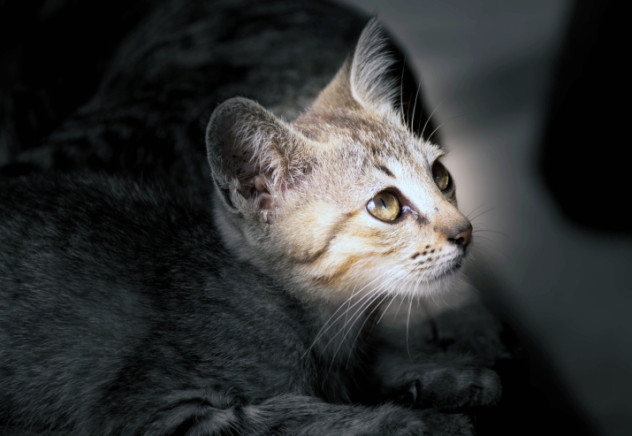
Just like cats, humans evolved in an environment that didn’t include four walls and a ceiling. Or a TV, computers, electric lights, and all the other marvels of civilization. For the majority of human existence, we were hunter-gatherers living in the wilderness, sometimes forming rudimentary shelters, but mostly living close to nature.
We might get small bursts of joy when we read a fun fact on the Internet, beat a level on a video game, or laugh at a joke on our favorite TV show, but there’s still a subconscious part of us that feels like there’s something wrong with being constantly indoors and mostly passive. In that way, humans and cats might not be all that different. Maybe, when they knock over all the pencils and pens on the desk, a part of our brain kind of relates to that.
2Feline Confusion With Modern Life Represents Our Own Struggles
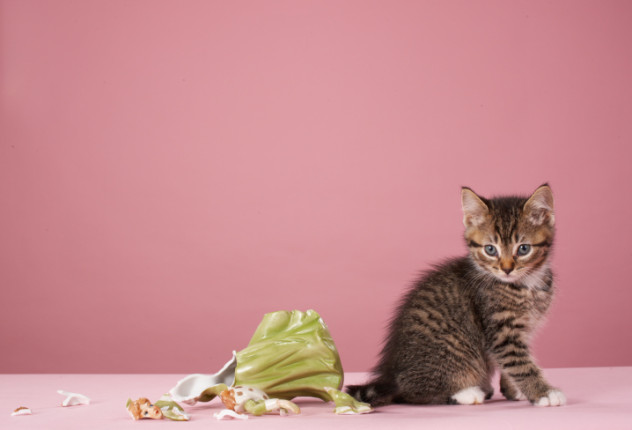
Humans are smarter than cats. We’re the species who invented houses and all the cool stuff inside of them. And we didn’t invent and continue using all those things because we hated them. The invention of houses came from our natural desire to keep ourselves warm and protected. The invention of microwaves and frozen meals came from our natural desire to obtain food without having to do too much work. But making life as easy as possible has its downsides. How many of us get home from our desk jobs and feel like we accomplished nothing, only to spend the rest of the night continuing to accomplish nothing in front of our TVs or computers?
You know that amazing feeling you get when you clean your house? Even though you really, really didn’t want to do it? That’s because you’re actually accomplishing something tangible and that’s what your caveman brain understands best. All the cheat codes to happiness that we’ve built over centuries often feel, well, like cheating.
Of course, that’s a pretty abstract problem and most people have bigger things to worry about. But when we see a cat knock over a glass of water and then look completely indifferent about it, we laugh because we can kind of relate to that sentiment. Even though society trains us to abide by rules like “don’t knock over a glass of water,” there’s a part of us that resents that. So it’s nice to have a creature around that doesn’t seem to care what anyone thinks of it.
1Cats Are Often Our Main Connection To Nature
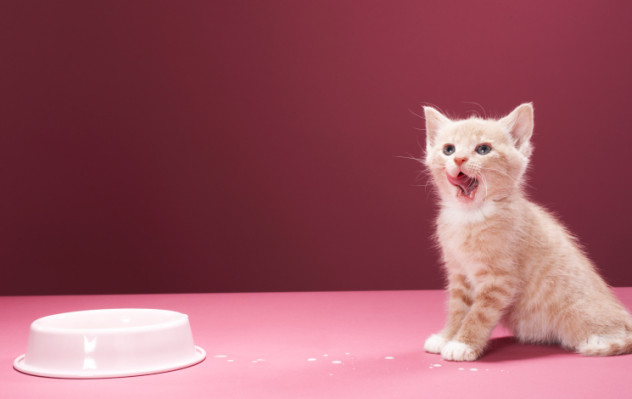
Despite being man’s best friend, dogs haven’t become nearly as Internet popular as cats. Dogs and humans evolved alongside each other and and (most) dogs are smart enough to figure out how to coexist with humans so easily that there’s really not that much strangeness compared to living with a cat.
But when we have pet cats, we are living with tiny pumas. As we noted, humans have become so far removed from nature that we often don’t even think about nature until we’re shoveling snow or bracing for a hurricane. We have the same brains as our hunter-gatherer ancestors but can go for days at a time without really venturing outside, even though being in nature often makes us feel happier. Sharknados aside, we’ve pretty much removed ourselves from the food chain. But by surrounding ourselves with cities and walls, we’ve also erased our connection to all the other animals on this planet. It’s lonely at the top.
Cats are our furry little reminders that there’s a whole animal kingdom outside our walls. Knocking over papers, sleeping on laptops, or breaking into the pantry and eating all the Rice Krispies provides us with a much-needed connection to the wild world. So, thanks cats, for reminding us where we came from and who we really are.
Katie Dempsey grew up in Shippensburg, Pennsylvania, and went to the University of Pittsburgh in Pittsburgh, Pennsylvania, to get her B.A. in Nonfiction Writing. She is currently attending Graduate School for her M.A. in Mental Health Counseling to become a licensed professional counselor. Her blog is toasterlyreasons.tumblr.com.







